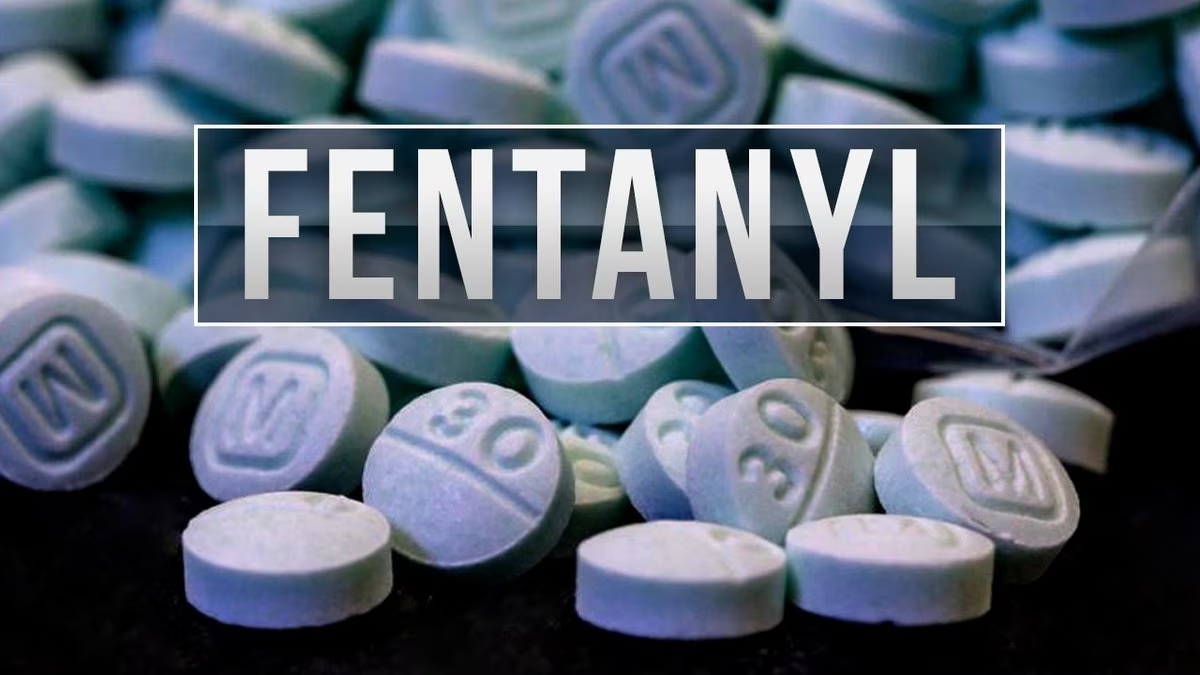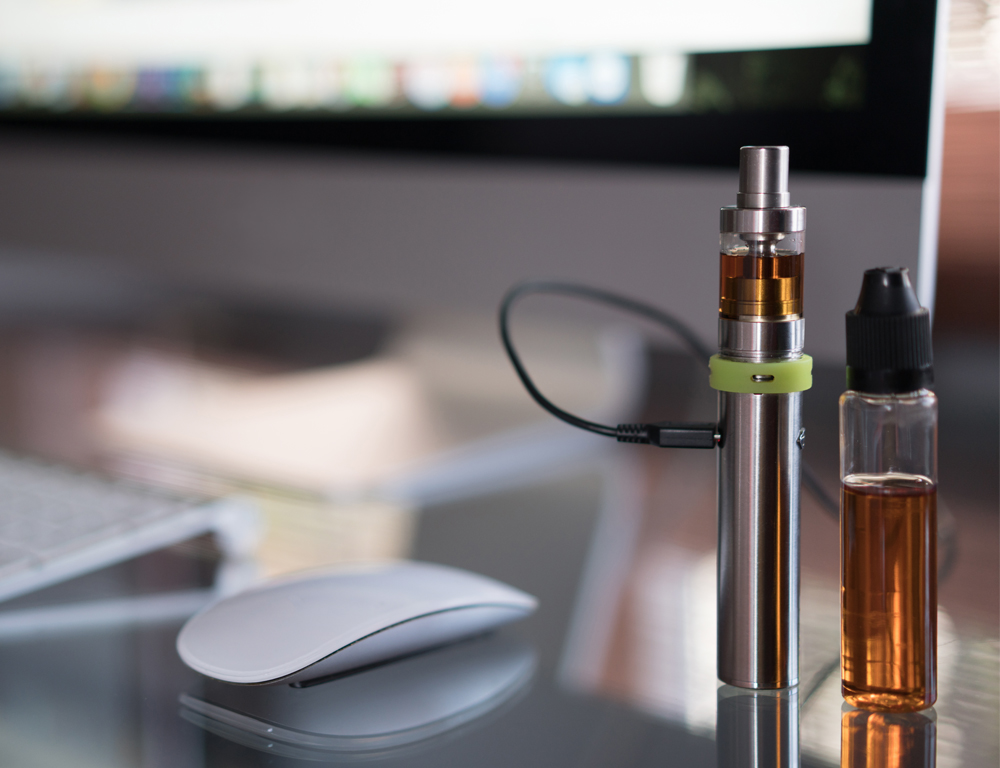The Drug Enforcement Administration (DEA) reported last month that federal authorities seized more than 379 million potentially deadly doses of fentanyl last year, enough to kill every American.
Informed Families Catalyst
Searching for Answers on the Fentanyl Crisis
Posted by Informed Families on January 15, 2023 at 1:53 PM
Topics: parenting, drug, teenagers, drug abuse, study, teens, fentanyl
Study Finds Teens Missing the Message on Vaping, Tobacco
Posted by Informed Families on December 29, 2022 at 8:49 PM
In a sign that young people are not heeding the warnings about the dangers of smoking and vaping, a new study commissioned by the U.S. Food and Drug Administration (FDA) and the Centers for Disease Control and Prevention (CDC) estimates that more than three million U.S. middle and high school students used some form of tobacco product within the previous 30 days in 2022.
Latest National Survey Shows Alcohol and Teen Rx Drug Use Declines; Marijuana Use Steady, Increase In Depression
Posted by Informed Families on September 17, 2015 at 12:08 PM
The Substance Abuse and Mental Health Services Administration’s (SAMHSA) latest National Survey on Drug Use and Health (NSDUH) report shows progress in reducing some forms of substance use – especially among adolescents. Substance use levels in many areas, however have remained relatively constant. Mental illness levels have also remained constant over time, but adolescents are experiencing higher levels of depression than in past years.
SAMHSA issued its 2014 NSDUH report on mental and substance use disorders as part of the kick off for the 26th annual observance of National Recovery Month. Recovery Month broadens public awareness to the fact that behavioral health is essential to health, prevention works, treatment for substance use and mental disorders is effective, and people can and do recover from these disorders.
Topics: marijuana, prescription drugs, study
Pediatricans Warn of the Dangers of Binge Drinking in Adolescents
Posted by Informed Families on September 15, 2015 at 3:57 PM
AAP Warns of the Dangers of Binge Drinking in Adolescents
8/31/2015Despite recent declines, two out of every three students (66 percent) have consumed more than just a few sips of alcohol by the end of high school, and over a quarter have done so by eighth grade. In 2014, half of twelfth graders and one in nine eighth graders reported having been drunk at least once in their life.
In a new clinical report, " Binge Drinking," in the September 2015 Pediatrics (published online Aug. 31), the American Academy of Pediatrics (AAP) urges pediatricians and parents to discuss the dangers of alcohol use with children before they take their first sip.
Alcohol is the substance most frequently abused by children and adolescents in the United States, and its use is associated with the leading causes of death and serious injury at this age, including motor vehicle accidents, homicides, and suicides. Eighty percent of adolescents say their parents are the biggest influence on their decision to drink or not.
"We must approach drinking in children, particularly binge drinking, differently than we do in adults," said pediatrician Lorena Siqueira, MD, MSPH, FAAP, member of the AAP Committee on Substance Abuse and co-author of the clinical report.
"Given their lack of experience with alcohol and smaller bodies, children and adolescents can have serious consequences -- including death -- with their first episode of binge drinking," Dr. Siqueira said. "Studies have indicated that continued alcohol use during this growth period can interfere with important aspects of brain development that can lead to cognitive impairment, alcohol-induced brain damage and substance use disorders later in life. Because alcohol use is so common, it is necessary for pediatricians to screen every adolescent for alcohol use during office visits, and along with preventive messages, to help identify youth at risk for alcohol-related problems."
Drinking alcohol is associated with numerous adverse outcomes in underage drinkers, and binge drinking significantly increases these risks.
In adults, binge drinking is defined as consuming five or more alcoholic drinks in a two-hour period by men, or four or more drinks by women. Because teens typically weigh less than adults, they are likely to reach an unsafe blood alcohol concentration more quickly, and lower cutoff points have been proposed. For girls ages 9 to 17, three or more drinks in a two-hour period is considered binge drinking. For boys ages 9 to 13, the cutoff is three or more drinks; for boys ages 14 to 15 it's four or more drinks; and for boys ages 16 to 17, it's five or more drinks.
During high school, drinking rates increase dramatically among teens. Between 36 percent and 50 percent of high school students drink alcohol, and 28 percent to 60 percent report binge drinking. Among high school students, boys are more likely than girls to participate in binge drinking, and is far more common among white boys than among blacks or Hispanics.
The new 2015 clinical report also found:
- Among youth who drink, the proportion who drink heavily is higher than among adult drinkers.
- Children start to think positively about alcohol between 9 and 13 years of age.
- Binge drinking can be associated with early sexual activity and higher rates of teen pregnancy.
- A third of all fatal auto crashes involving alcohol happen among 15- to 20-year-olds.
- Encouraging parents to talk with their children about alcohol use early is very important.
- Programs and resources are available on how to use teachable moments to discuss alcohol use with children.
Despite recent declines, two out of every three students (66 percent) have consumed more than just a few sips of alcohol by the end of high school, and over a quarter have done so by eighth grade. In 2014, half of twelfth graders and one in nine eighth graders reported having been drunk at least once in their life.
In a new clinical report, "Binge Drinking," in the September 2015 Pediatrics, the American Academy of Pediatrics (AAP) urges pediatricians and parents to discuss the dangers of alcohol use with children before they take their first sip.
Alcohol is the substance most frequently abused by children and adolescents in the United States, and its use is associated with the leading causes of death and serious injury at this age, including motor vehicle accidents, homicides, and suicides. Eighty percent of adolescents say their parents are the biggest influence on their decision to drink or not.
New Research Shows Marijuana Use Impairs Driving
Posted by Informed Families on July 22, 2015 at 1:01 PM
Effects of marijuana – with and without alcohol – on driving performance
Using the most sophisticated driving simulator of its kind to mirror real-life situations, new research shows that marijuana use impairs one measure of driving performance. People driving with blood concentrations of 13.1 µg/L THC – the main psychoactive ingredient in marijuana – showed increased weaving within the lane, similar to those with 0.08 breath alcohol, the threshold for impaired driving in many states. Drinking alcohol and smoking marijuana had an additive effect, so that drivers using both substances weaved within lanes even if their blood THC and alcohol concentrations were below the impairment thresholds for each substance alone. Alcohol, but not marijuana, increased the number of times the car actually left the lane and the speed of weaving. The National Institute on Drug Abuse, the Office on National Drug Control Policy, and the National Highway Traffic Safety Administration funded the study.
New Report Shows Steady Decline In Underage Drinking
Posted by Informed Families on June 1, 2015 at 12:28 PM
A new report by the Substance Abuse and Mental Health Services Administration shows a significant decline in the level of past month (current) underage alcohol consumption, as well as a drop in underage binge drinking. Yet, alcohol still remains the most widely used substance of abuse among youths aged 12 to 20.
The report shows that level of current underage drinking among those aged 12 to 20 decreased from 28.8 percent in 2002 to 22.7 percent in 2013.
Likewise, the level of current underage binge drinking also declined from 19.3 percent in 2002 to 14.2 percent in 2013. Binge drinking is defined as having five or more drinks on the same occasion (i.e., at the same time or within a couple of hours of each other) on at least one day in the past 30 days.
Topics: underage drinking, study





